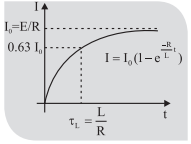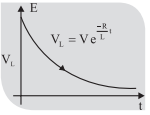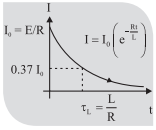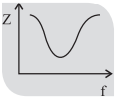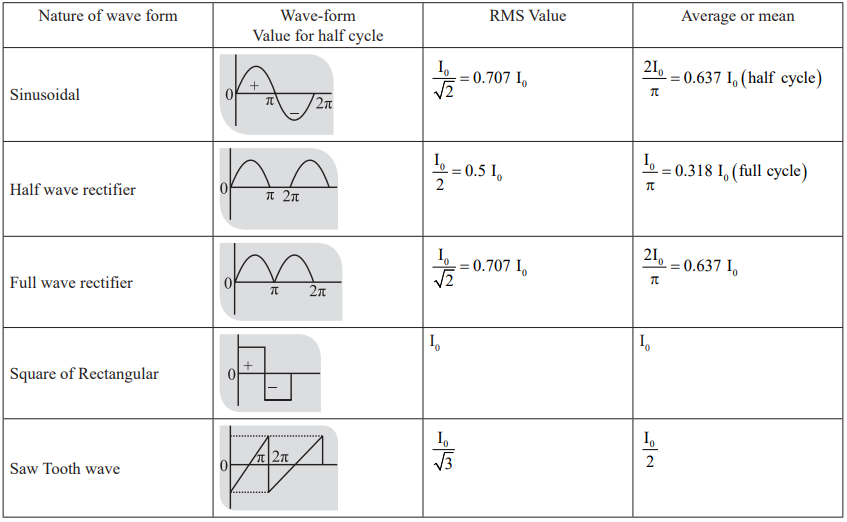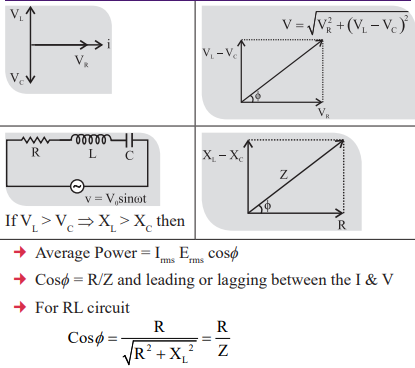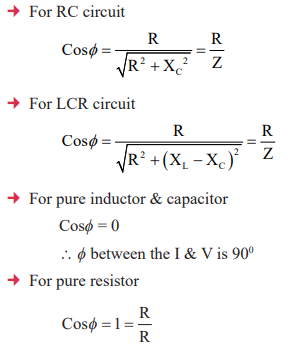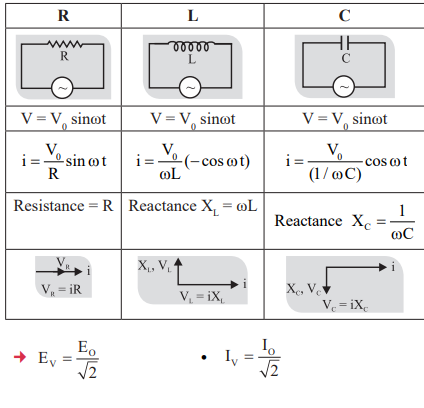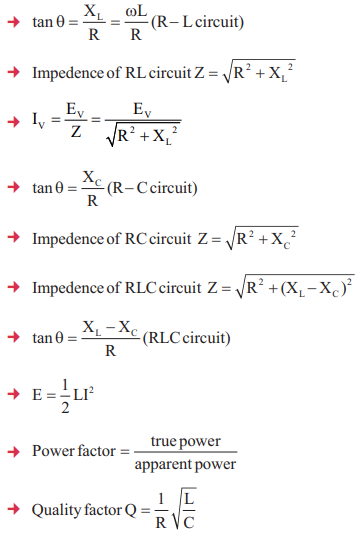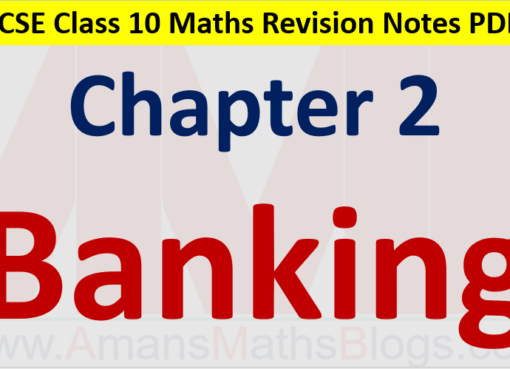Hi CUET aspirants, Welcome to Amans Maths Blogs (AMBIPi). In this post, you will get CUET Physics Notes Alternating Current AMBIPi. This CUET Physics Notes are designed by analyzing to the CUET Syllabus and CUET Previous Years Questions Papers.
CUET Physics Notes
CUET Physics Alternating Current: Important Points to Remember
There are following important points in this chapter of Alternating Current.
- Shock of A.C is attractive, whereas that of D.C is repulsive.
- For electroplating, electrorefining, electrotyping etc., A.C cannot be used, in such cases D.C is used.
- A.C can be converted into D.C with the help of a rectifier while D.C can be converted into A.C with the help of an inverter.
- Capacitor gives infinite resistance to D.C as Xc = 1/ωc and hence ω = 0, Xc = ∞.
- R.M.S value of A.C is that value of steady current, which would generate the same amount of heat in a given resistance in a given time as is done by the A.C when passed through the same resistance for the same time.
- Inductor gives smooth pass to D.C as XL = ωL, ω = 0, XL = 0.
- Self inductance plays a role of inertia (opposes both decay & growth)
- Work needs to be done against the back e.m.f E in establishing the current. This work done is stored as magnetic potential energy.
- Series resonance circuit also known as acceptor circuit because it admits maximum current.
- Parallel resonance circuits are used in the transmitting circuits. They reject the currents corresponding to parallel resonance of frequencies and allow other frequencies to pass through. Such circuits are called filter circuits or Rejector circuits or even anti resonance circuits.
- Average power/cycle associated each with an inductor and a capacitor is zero. But average power per cycle associated with a resistor is not zero. P = IrmsErmsCosϕ.
- Average power associated with pure inductor and pure capacitor is zero.
- A.C cannot produce chemical effects of currents e.g., electrolysis, electroplating etc. due to the large inertia of
heavy ions which cannot follow the frequency of A.C. - The divisions marked on A.C ammeter scale are not equally spaced because an A.C ammeter is based on heating effect of current, and heat produced (H) is directly proportional to square of current.
- We can measure D.C by an ammeter but not A.C because full cycle of A.C is zero.
- Current rises only exponentially not at the constant rate.
- The dimensional formula of √(LC) and RC is equal to (M0L0T1).
- Whatever be the circuit, power dissipation is always through resistor.
- Choke coil (inductor) is prefered in controlling A.C than the rheostat because no power or energy is dissipated through choke coil. In rheostat some energy is dissipated in the form of heat.
- There is no device that can control D.C even a choke coil cannot do so.
- Wattless current is one for which average power as well as power factor is zero.
CUET Physics Alternating Current: Important Graphs
1. Graph XL (in Ω) and f (in Hz)

2. Graph XC (in Ω) and f (in Hz)
3. Graph showing growth of current in L-R circuit
4. Potential difference across resistance
5. The equation gives the value of current at any time t during decay of current in LR-circuit.
6. Curves represents the variation of impedance (Z) with frequency f in series LCR
CUET Physics Alternating Current: Important Formulas
1. AC Through LCR Circuit
2. AC circuits
3. AC Circuit Containing Inductor, Capacitor, Resistance, Resonance Power Factor
CUET Physics Mock Test
Now, you have revised the this CUET Physics chapter. So, you must need to practice CUET Physics Sample Papers. By solving these CUET Physics questions, you will be more confident about your CUET preparations.


